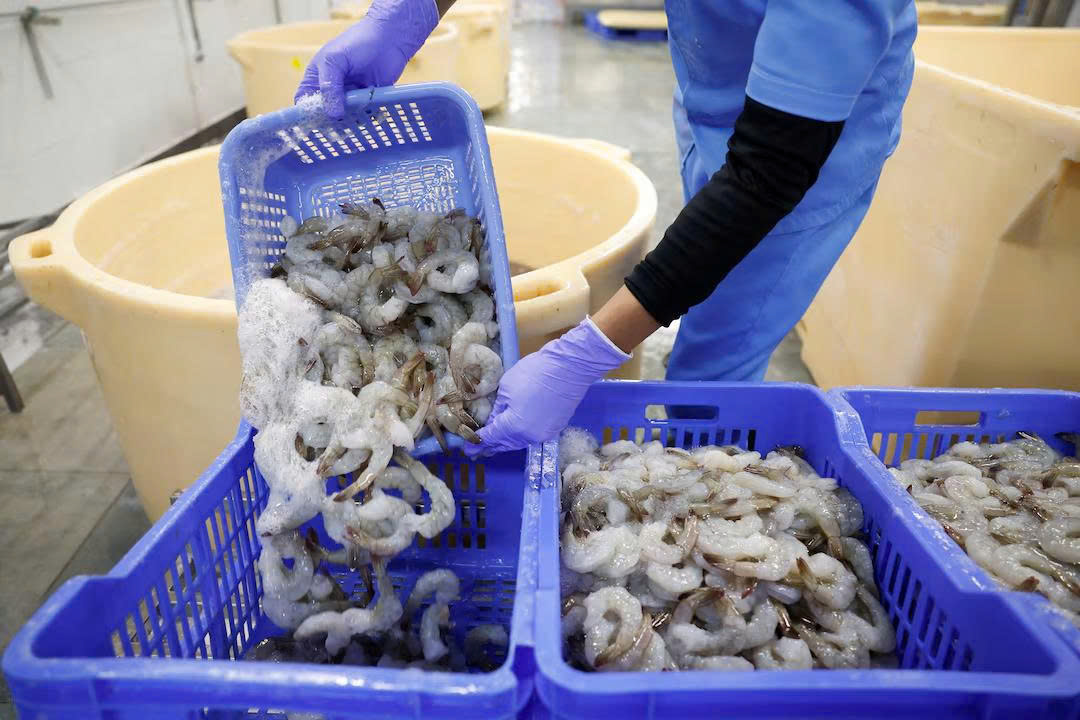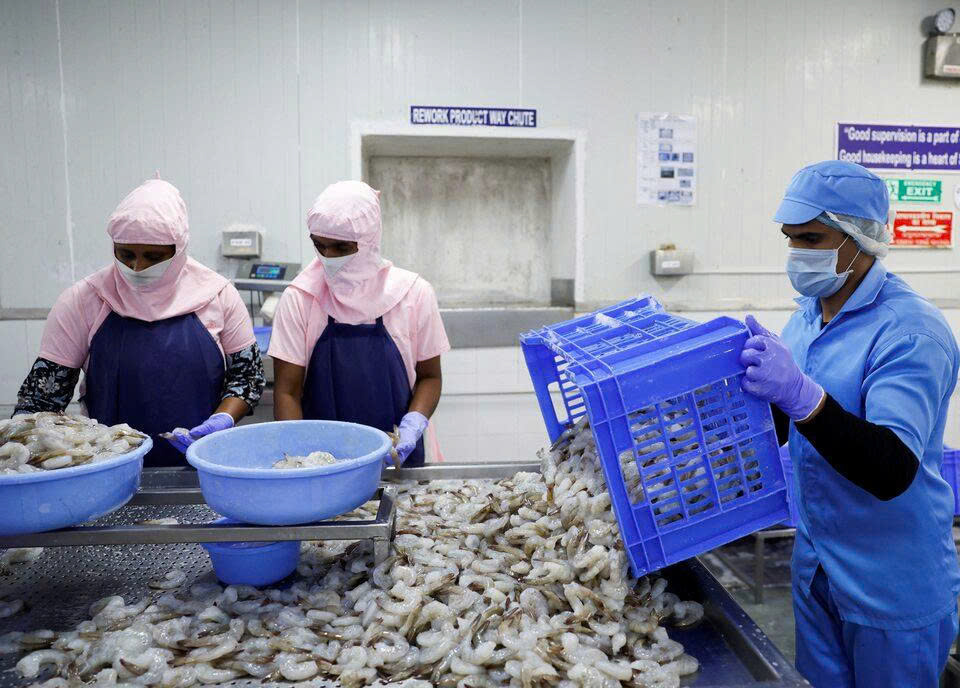
Figure 1: A worker pours shrimps into baskets for quality check inside a processing unit at a shrimp factory
The turbulence caused by President Donald Trump's tariffs could disrupt global shipments of shrimp to the United States, with exporters in India's biggest supplier facing a 26% tariff under Trump's July plan. This threatens a $7-billion seafood export market heavily reliant on U.S. supermarket chains like Walmart and Kroger as buyers look to renegotiate rates.
Farmers are seeing demand dry up amid uncertainty as exporters have cut offer prices by a tenth since the tariffs. Many also face high payments for shrimp feed and rentals for the land where the saline ponds have been set up. The current rate of 10% has made exporters skittish.
India's major markets for seafood exports touched $7.3 billion last year, with shrimp accounting for 92% of India's seafood exports of $2.5 billion last year to its biggest market, the United States. Industry representatives have joined a state government panel weighing the impact of tariffs and looking for ways to boost exports to other countries, such as China.
Exporters fear Ecuador's competitive edge from Trump's planned lower tariff rate of 10% for the South American nation, particularly since it is much closer to the United States, its second biggest market for shrimp. Ecuadorean producers, with $1.55 billion in shipments in 2024, are less optimistic.
Although U.S. consumers have fuelled growth in the area of processed shrimp, Ecuador has yet to attain the capacity to replace India's production. India will be obliged to look for other markets where Ecuador is selling, like China and the European Union, so they will have more pressure in other markets.
JOURNEY OF 40 DAYS

Figure 2: Workers sort shrimps inside a processing unit at a shrimp factory
Reuters visited an Indian factory where shrimp is washed, machine sorted, and then quick-frozen. Thousands of tons of frozen shrimp leave Andhra Pradesh annually, taking 40 days to arrive at ports in New York, Houston, and Miami. The chief of India's seafood exporters group, G. Pawan Kumar, expressed concern about shipping containers packed with frozen produce being renegotiated by U.S. buyers following tariffs, as previously agreed rates are set to be renegotiated.
"Ten percent is high, we exporters operate on a 3% to 4% margin," said Kumar, president of the Seafood Exporters Association of India, which is pushing the government to win the industry exemptions in trade talks with the United States.
"It's game over" for the Indian industry if the tariff rate of 26% takes effect in July, said one shrimp exporter, who spoke on condition of anonymity.
He was in talks with U.S. clients who did not want to fully absorb the 10% tariff, he said, pointing to the risk of earning no profit if he had to sell 130 shipping containers already packed.
In Texas, the seafood section at a Walmart supermarket was piled high with packs of frozen shrimp, among them a "jumbo" variant labelled a product of India and priced at $7.92, under Walmart's own "Great Value" brand.
"We have built long-lasting and deep relations with suppliers over the years," said Latriece Watkins, the chief merchandising officer for Walmart in the United States. "We expect that to continue, going forward."
References: Sahiba Chawdhary, Rishika Sadam, Yury Garcia and Aditya Kalra - Reuters

 Facebook
Facebook  Youtube
Youtube  VN
VN

 Youtube
Youtube  Linkedin
Linkedin  Facebook
Facebook 
